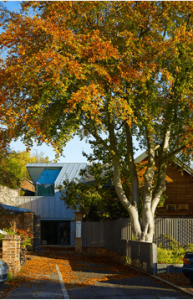Everyone wants to live in their dream home. In order to make this a reality, you need to design these buildings in the right way. With years of experience, we are just the right people to help. In fact, we are the foremost team specialising in residential architecture London has. So, whatever your idea of what makes the perfect home, we can create it for you.
 Understanding soil types and foundation systems is critical for anyone aiming to build or extend a house. The price of building foundations is one of the largest variables in your project. Thus, if you wish to retain control of the budget and schedule, you have to figure out what the most appropriate system for your site is.
Understanding soil types and foundation systems is critical for anyone aiming to build or extend a house. The price of building foundations is one of the largest variables in your project. Thus, if you wish to retain control of the budget and schedule, you have to figure out what the most appropriate system for your site is.
Pinpointing the most cost effective option shall largely rely on the ground conditions on the site. This includes the kind of soil, rock, or aggregate and its essential constituents. To help, we are going to discuss some of the soil types you can encounter. It is something you need to look at, especially when trying to create residential architecture in London.
Gravel and sand
Sandy and gravelly subsoils are some of the most common types in the UK. They are normally suitable for strip foundations. Usually, it is acceptable to have a depth of 700mm. This is as long as the ground has suitable bearing capacity. If your water table is high, this is going to be half. As a result, it is vital to keep your foundations as high as you can. A reinforced, shallow wide strip foundation might be appropriate.
You also need to think about flooding and soil erosion here. They are the two biggest causes of defects with this kind of soil. Even issues like a crack in a drain or a plumbing leak can lead to issues. What can happen is the sand can wash away, removing part of the subsoil and causing subsidence.
Chalk
This is another common type of ground. Providing that your chalk is not overly soft, foundation widths equalling 450mm for low-rise constructs are normally acceptable. The depth of your foundation here has to be beneath any frost action. The minimum has to be 700mm.
If you have soft chalk, you will need to excavate until you reach firm material. Chalk soils can be vulnerable to erosion too. Due to this, you must remain on guard for caves or hollows.
Clay
While this type of soil is also very common, it can have big variations in the consistency. For example, there is a type specifically known as London clay. It contains sand and is a blue or brown-grey colour. You can find it all over the Thames valley.
The problem with clay soils is they expand and shrink depending on the amount of moisture. Sandy clay will have less movement, so it can support higher loads. However, clay and silt will move more so you will need more extensive foundations.
Ask us about residential architecture in London
At Coffey Architects, we can help you with the foundations if you are unsure of what to do. We have had the honour to design plenty of different structures across London and beyond. Therefore, we know what steps to take to complete each project.
So, if you would like to work with the best company specialising in residential architecture London has, please give us a call. We can help you to create your dream home in any location.
